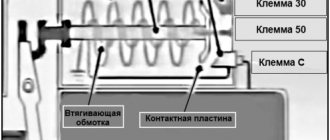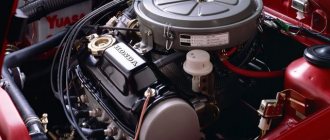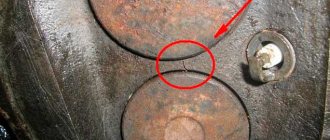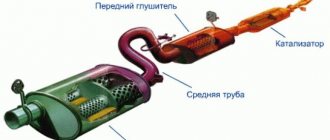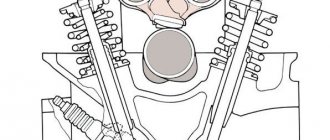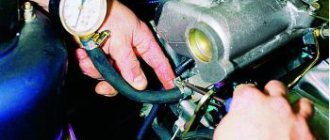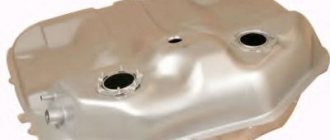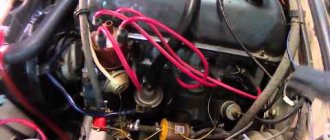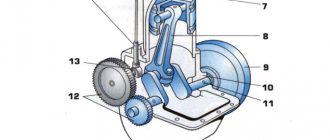Muffler resonator - part of the exhaust system, the tasks of which include damping low-frequency sounds arising from engine operation. It will be useful for every car enthusiast to know where the resonator is located and what possible problems he will have to face during its service. A breakdown of the exhaust pipe resonator is not critical, but it can cause a lot of inconvenience not only to the driver, but also to those around him. About how to eliminate problems that have arisen, how to dismantle and install the unit, as well as how to make a resonator with your own hands — we will talk about all this in this material.
Purpose of the resonator
First, let's figure out what a resonator is for . As mentioned above, it is part of the exhaust system of a car engine. Its main function is to dampen low-frequency sounds that arise during the exhaust process of gases and their entry into the gas exhaust system. There are two reasons why noise occurs in it:
- sound from expansion of gases;
- noise from vibration of exhaust system elements.
Resonator location
Along with a muffler, the tasks of a car resonator include reducing the speed of movement of exhaust gases. This becomes possible thanks to a physical law, according to which gases that move quickly in a narrow pipe, when they enter a large volume, lose their speed and, accordingly, energy. In the gas exhaust system, the resonator is located in front of the main muffler, being, in fact, the first link in the sound muffling chain of the exhaust system. That is, its main tasks are preliminary noise reduction and balancing of exhaust gas flow pulsations.
Some car owners call it the “middle muffler” (due to its physical location approximately in the middle of the bottom of the car) or the “second muffler.” However, this is not true because the exhaust system resonator and muffler have different operating principles.
The resonator of the car exhaust system also performs the function of freeing the engine exhaust from exhaust gases and creating uniform pressure in it. This ensures minimal resistance to the movement of exhaust gases, and it is possible to use almost all the useful engine power.
Since the resonator still takes away part of the power 10...15%, in sports cars they use so-called direct-flow mufflers and do not install resonators.
The history of the appearance of the resonator in the exhaust system
With the advent of the first internal combustion engines, the issue of noise reduction and exhaust purification became acute. At first, exhaust systems had a primitive structure, but over time, to increase the efficiency of the system, various auxiliary elements were added to it.
